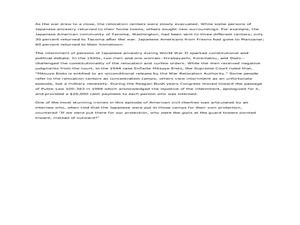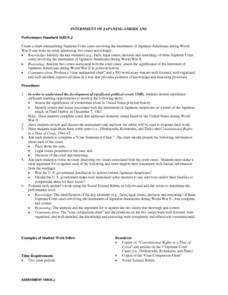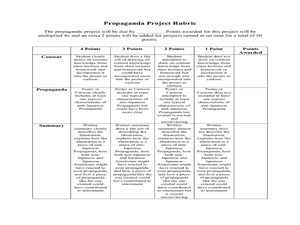Franklin D. Roosevelt Presidential Library & Museum
Pearl Harbor Activity #3: Public Opinion Word Cloud
As part of a study of the December 7, 1941 attack on Pearl Harbor, young historians imagine the feelings of those who lived during the attack by creating a word cloud of 10 words they think express the emotions of people at that time....
US National Archives
WWII: The Pacific 1939-45 – Pearl Harbor
Though December 7th, 1941 was a day "which would live in infamy," World War II had provided many infamous days, events, battles, and atrocities in the years before. So why were American forces so surprised when Japan attacked Pearl...
Franklin D. Roosevelt Presidential Library & Museum
Pearl Harbor Activity #1: Newspaper or Radio Account
After listening to President Franklin D. Roosevelt's "Day of Infamy" speech, young historians research information about the Japanese attack on Pearl Harbor, possible motives for the attack, and the consequences of the attack. Scholars...
Franklin D. Roosevelt Presidential Library & Museum
Pearl Harbor Activity #7: Pop Up Video Activity
A pop-up video version of FDR's "Day of Infamy" speech engages scholars in depending their understanding of the attack on Pearl Harbor. After watching the video, class members select five new things that they learned and research how...
Curated OER
Lesson 3: Japan's "Southern Advance" and the March toward War, 1940-1941
High school historians interpret historical evidence presented in primary resources to decide if the southern advance was a reckless step toward war, or if it was reasonable. They research the Japanese southern advance tactics during the...
Curated OER
Pearl Harbor
Students consider the impact of the attack on Pearl Harbor. In this World War II lesson, students research print and electronic sources about the attack on Pearl Harbor and then write news article about the attack from an American or...
Franklin D. Roosevelt Presidential Library & Museum
Pearl Harbor Activity #4: Who is the Audience?
Young historians use the prompts on a worksheet to analyze President Roosevelt's "Day of Infamy" speech. They identify the intended audience for the speech, the devices FDR used to persuade his audience, the responses promoted, and the...
Franklin D. Roosevelt Presidential Library & Museum
Pearl Harbor Activity #5: The Medium Matters
Young journalists learn that how we get our news and information matters in a collaborative social studies activity. The class is divided into three groups with the first analyzing a transcript of FDR's "Day of Infamy" speech, the second...
Franklin D. Roosevelt Presidential Library & Museum
Pearl Harbor Activity #6: December 7 and September 11 - Infamy Twins?
Why did attackers on December 7, 1941, and on September 11, 2001, choose the targets they did? That is one of several questions young historians try to answer as they compare and contrast the two attacks. They also consider the...
Curated OER
America Enters WWII
Middle schoolers analyze the attack on Pearl Harbor. In this World History lesson, students research the events that led to the attack of Pearl Harbor then discuss the what happened after the attack. They finish the lesson with writing...
Curated OER
Introduction to Japanese Internment
Students discover details about Japanese Internment. In this World War II lesson, students analyze images and documents related to the movement of Japanese-Americans to West coast internment camps in the wake of the Pearl Harbor attacks....
Curated OER
American Justice on Trial
Students role play a trial in which they consider if the United States government violated the rights of Japanese Americans after Pearl Harbor.
Curated OER
Internment of Japanese-Americans
Students assess the significance of a watershed event in the political history of the United States . They identify events and issues associated with the internment of Japanese-Americans as a result of the Japanese attack on Pearl Harbor...
Curated OER
A Balancing Act
Students compare and contrast the response to Pearl Harbor in 1941 and the response to terrorism in the U.S. since Sept. 11, 2001. They conduct Internet research, complete a worksheet, and develop a plan based on their own ideas how the...
Curated OER
America and the Sino-Japanese Conflict, 1933-1939
Students examine the U.S. stance regarding the Sino-Japanese conflict. For this diplomacy lesson, students analyze the sanctions employed by United States on Japan when they took over Manchuria. Students determine how actions by the...
Curated OER
Writing About Pearl Harbor
Students summarize the reasons why the U.S. entered World War 2. They view a video on the bombing of Pearl harbor, construct a timeline of WWII events, and evaluate propaganda posters to create their analysis of the start of U.S....
Shaker Junior High School Library Media Center
WWII Project Outline
Work together as a class and get to know the ins and outs of World War II with this engaging collaborative project. Class members are broken into groups to research particular war topics, from life on the home front to the Holocaust and...
Curated OER
Flawed Democracies, Human Rights
Students investigate the bombing of Pearl Harbor. In this U.S. History instructional activity, students discover the Japanese internment camps and why our government chose to relocate the Japanese. Students examine photographs from the...
Curated OER
Japanese American Internment: Examining Racial Tensions
Young scholars discover how racial tension led to Japanese Internment. In this World War II lesson, students analyze political cartoons and posters related to the movement of Japanese-Americans to internment camps in the wake of the...
Curated OER
Pearl Harbor
Students summarize reasons for the US entrance into WWII. They evaluate the pros and cons of these reasons. A time line of WWII events is created by each student. A journal of personal emotions while critiquing this research is documented.
Curated OER
The failure of Diplomacy, September-December 1941
Students investigate four main issues of concern between US and Japan prior to US involvement in World War II. In this role play lesson, students will take the role of US and Japanese negotiators trying to find a diplomatic solution to...
Curated OER
Italian Enemy Aliens During World War II: Evacuation from Prohibited Zones
Young scholars read and discuss the Enemy Alien Evacuation Order. They perform research by reading newspaper articles from February 1942 as well as investigating available information on the Internet. Students work in groups to create a...
Curated OER
Wives and Mothers in WWII
Eighth graders explore the effect of World War II from a financial standpoint. In this World History lesson, 8th graders review World War II through teacher lecture, reading and viewing pictures and cartoons, then discuss the hardships...
Curated OER
Evacuation: The Japanese Americans in World War II
Students examine Japanese internment camps of World War II. In this World War II lesson, students use primary and secondary sources to research the evacuation process and life within the internment camps. Students discuss the racial bias...
Other popular searches
- Pearl Harbor Wwii
- Attack on Pearl Harbor
- Pearl Harbor Map
- Pearl Harbor Day
- Pearl Harbor Attack
- Social Studies, Pearl Harbor
- Pearl Harbor Lesson Plans
- Pearl Harbor Movie
- Pearl Harbor Crossword
- Pearl Harbor Crossword Puzzle
- Wwii Pearl Harbor Movie
- Bombing of Pearl Harbor

























